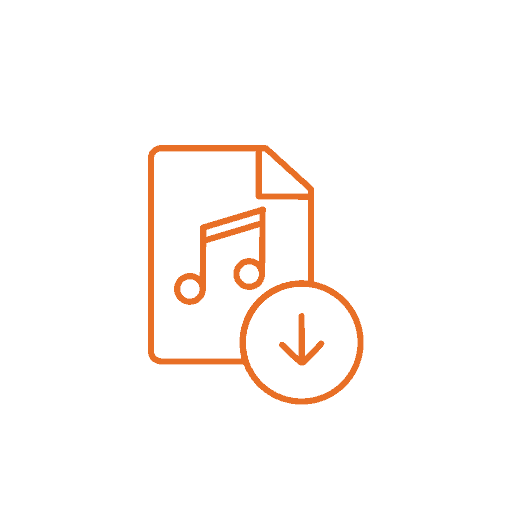Symptom Management: Pain
October 5, 2020
Maureen A. Mealy, PhD joins GG deFiebre of SRNA for an ABCs of NMOSD podcast on “Symptom Management: Pain.” Dr. Mealy begins by explaining the different types of pain that can occur with NMOSD. She discusses different treatments for pain and current research into new treatment options. She talks about TENs treatment, Scrambler Therapy, and complementary treatments. Dr. Mealy discusses pain in relation to a relapse and how to cope with pain long-term.
Transcript
Intro: [00:00:00] ABCs of NMOSD is a 10-part education podcast series to share knowledge about neuromyelitis optica spectrum disorder, or NMOSD, a rare, relapsing autoimmune disorder that preferentially causes inflammation in the optic nerves and spinal cord. ABCs of NMOSD Podcast Series is hosted by SRNA, the Siegel Rare Neuroimmune Association and in collaboration with the Sumaira Foundation for NMO, the Connor B. Judge Foundation and Guthy Jackson Charitable Foundation. This education series is made possible through a patient education grant from Viela Bio.
GG deFiebre: [00:00:59] Welcome to the ABCs of NMOSD Podcast Series. Today’s podcast is about managing pain in NMOSD. My name is GG deFiebre from the Siegel Rare Neuroimmune Association. ABCs of NMOSD is made possible through a patient education grant from Viela Bio.
[00:01:17] Viela Bio is dedicated to the development and commercialization of novel life-changing medicines for patients with a wide range of autoimmune and severe inflammatory diseases. Their approach to drug discovery is aimed at providing targeted treatments for improved outcomes for the thousands of patients who have few or no therapeutic options. For additional information about Viela, please visit vielabio.com.
[00:01:40] For this podcast, we are pleased to be joined by Dr. Maureen Mealy. Maureen Mealy, PhD, has longstanding clinical and research expertise in rare immune-mediated diseases of the central nervous system, including neuromyelitis optica and transverse myelitis.
[00:01:56] Having worked at Johns Hopkins for most of her career with Drs. Michael Levy, Carlos Pardo and Benjamin Greenberg, she acted as the Program Manager, Clinical Research Director, and Senior Nurse of the Johns Hopkins TM Center and NMO Clinic. Dr. Mealy has been involved in collaborative research investigations and data dissemination in over 30 peer reviewed manuscripts.
[00:02:17] This sparked her passion and commitment to research and led to her decision to pursue her doctor degree through the Johns Hopkins University. She recently completed her PhD under the mentorship of Dr. Levy, which focused on treatment of neuropathic pain in patients with NMO through a sham-controlled trial testing a novel type of transcutaneous electrical nerve stimulation called Scrambler Therapy.
[00:02:39] Neuropathic pain has been identified as a significant contributor to disability and poor quality of life in patients with NMO, and the pain associated with this disease is often intractable to treatment. Dr. Mealy is committed to developing a deeper understanding of and making a significant contribution toward alleviating the physical and emotional suffering of patients, thus enabling them to engage more fully in their lives.
[00:03:02] Recently, she joined the team at Viela Bio, a biotech company that shares in her passion for advancing the treatment of NMO by selectively targeting critical pathways that are the root cause of the disease. As a medical science liaison, she is deeply committed to sharing her clinical expertise in NMO with colleagues and healthcare providers, and is also dedicated to patient, family, and community engagement and education.
[00:03:25] Dr. Mealy is a certified rare neuroimmunologic disorder specialist through the consortium of multiple sclerosis centers and serves on the Siegel Rare Neuroimmune Association Medical and Scientific Council and the Guthy Jackson Charitable Foundation International Clinical Consortium. The opinions expressed by Dr. Mealy in this podcast are her own and do not necessarily reflect those of Viela Bio.
[00:03:46] To start, what kind of pain occurs with NMO?
Dr. Maureen Mealy: [00:03:52] The most common types of pain that patients with NMO experience are neuropathic pain and spastic pain. Neuropathic pain is characterized by that agonizing, burning shooting, tingling sensation, and can happen anywhere on the body, depending on where in the spinal cord the inflammation was. So it can affect the arms, the legs, the torso, and it’s caused by the nerve damage in the spinal cord. It’s usually constant, though the intensity of the pain can kind of ebb and flow and can be affected by a whole host of physiologic stressors. And spastic pain is characterized by episodic increased muscle tone that causes muscle spasms that usually lasts seconds, maybe up to a minute, and can be brought on by stimulation. So moving or touching an area that is predisposed to spasms can trigger them. And both types are quite prevalent, especially neuropathic pain, which is reported to occur in 62 to 91% of patients with NMO. And spastic pain, in at least a quarter of patients with NMO. And it’s very severe, much more severe than pain caused by other conditions in general. NMO patients really, disproportionally, suffer with this pain a lot more than in other conditions.
GG deFiebre: [00:05:21] Wow. Yeah. As you said, that this is quite common in NMO, how can this pain be managed in NMO? Are there certain treatments that are commonly used? Are there any treatments that are currently being researched that might be available in the future?
Dr. Maureen Mealy: [00:05:40] Currently there is no standard of care for central neuropathic pain treatment, but like neuropathic pain that’s caused by other conditions, the most frequently used medications towards treatment of NMO are antiepileptics like Gabapentin or Neurontin, pregabalin also called Lyrica, or carbamazepine, and then antidepressants like amitriptyline or Cymbalta. And then NSAIDs, nonsteroidal anti-inflammatory agents, like Naproxen or ibuprofen. Now for spasms, things like Baclofen, tizanidine, and clonazepam are the most commonly used, I would say. But descriptive studies in NMO really show that the medications don’t completely take the pain away, which can result in frequent breakthrough narcotic use. And because pain relief is so tough to achieve in NMO, doses and numbers of medications are often increased, which results in more side effects and particularly at higher doses. So I think it’s important to set expectations such that the goal should be to get pain down to a manageable level that enables patients to engage in their lives the way they want to, rather than an expectation that pain can be completely taken away because it’s too often an unrealistic goal, unfortunately.
[00:07:05] Now in terms of research, there have been two randomized controlled trials performed in patients with pain caused by NMO. One is a medication that was studied in the UK in nine patients with NMO a couple of years ago, but results haven’t been made available.
[00:07:24] And then the second one we conducted actually at Hopkins in 22 patients with pain caused by NMO using a technology called Scrambler Therapy, which is kind of a next generation TENS, transcutaneous electrical nerve stimulation, which may be familiar to patients, where patients receive a series of treatments where the peripheral nerves responsible for pain are stimulated through so-called scrambled wave forms. So traditional TENS evokes a repetitive identical wave form that’s emitted, and this is a slightly different approach. And the idea is that the information gets interpreted by the brain to replace pain with no pain information. And pain was significantly reduced following treatments and was sustained at 30 days, but the problem is that Scrambler Therapy isn’t widely available. The hope is that as knowledge about this therapy continues to grow more and more providers buy in to this approach, that it will become more widely available. But the bottom line is there really needs to be more investigation into pain treatments in NMO.
[00:08:36] These patients arguably experience the worst of the worst pain, yet, there have only been these two interventional trials. There aren’t any ongoing that I’m aware of, and none listed in clinicaltrials.gov that I could find.
GG deFiebre: [00:08:54] Thank you. And then if someone’s interested, for example, in maybe looking into getting something like Scrambler Therapy, is there a way that they would be able to do that or is it still just an investigational treatment?
Dr. Maureen Mealy: [00:09:05] There are pain clinics that actually do offer these treatments throughout the country, but they can be few and far between. So really Scrambler Therapy gained it’s footing in oncology. There are also some oncology centers that have access to Scrambler machines. But then billing can be an issue as well, and so some clinics’ approach is to bill patients out of pocket and not go through insurance. And so obviously that can be prohibitive for a lot of patients. But there are also clinics that will figure out ways to creatively bill it, in ways that are still within the confines of legal, in terms of billing it as a TENS treatment since it is a type of TENS.
[00:09:54] So, you can Google, or whatever platform you use, ‘Scrambler Therapy’, and you can find some centers that will offer it. But even then, because again, it gained its footing in oncology and that causes peripheral neuropathy for the most part, some people who know how to do the treatments don’t necessarily offer it to patients with central neuropathic pain.
[00:10:23] And so again, I think it’s really a matter of making the results known to people so that they can perhaps get these treatments through these oncology centers in pain clinics, because most neurology clinics don’t have access to this kind of machine.
GG deFiebre: [00:10:39] Got it. Thank you. I know you talked a bit about the different medications and then things that have been researched, but is there any evidence for things like complimentary treatments in treating neuropathic pain in NMO?
Dr. Maureen Mealy: [00:10:52] Complimentary treatments are just that. They’re meant to compliment other more traditional treatments, not necessarily stand alone the way alternative medications or alternative treatments do.
[00:11:04] And, again, there’s been so little investigation into these. When looking at other conditions that cause central neuropathic pain like traumatic spinal cord injury or multiple sclerosis, there has been investigation into different complimentary and nonpharmacologic therapies. And I’ll talk about a couple for which there’s a decent amount of research in these other conditions. So TENS treatment that we just talked about, Scrambler specifically, but more broadly, TENS treatments have been investigated in the central neuropathic pain conditions. As well as cognitive behavioral therapy, which is an intervention aimed at modifying how you think of pain, which is aimed to improve your ability to cope with it. And then exercise or rehab programs as well as acupuncture.
[00:11:55] But with every single one of these that I’ve just listed, the data is mixed and sample sizes are often small. So it may be that some people are responders to some of these treatments and others just aren’t. So I think these therapies are definitely worth exploring. Like with the different medication options, it’s going to be a matter of trial and error though, to really find. There’s no medication or nonpharmacologic intervention that’s just the sure thing and the way to start. The path is really different for everybody.
GG deFiebre: [00:12:28] Got it. Two questions from our community. Someone asks: ‘I’ve had neuropathic pain. What can I do against it? It’s been persistent since the onset of the disease in October 2018.’
Dr. Maureen Mealy: [00:12:42] There are data in other conditions that suggest that combining pharmacologic with nonpharmacologic interventions have more impact on pain than just one or the other alone. So I think it makes sense not to limit your options and to try both. You have to be thoughtful about it. Use a stepwise approach so that you can figure out what’s helping and what’s not.
[00:13:07] But really, I encourage thinking outside the box with a lot of these things we’ve already just discussed in previous questions. And then, engage your community. So there’s, SRNA is a wonderful example. There’s Sumaira Foundation, Guthy Jackson Foundation. These all have such strong patient communities, and finding out what works for other patients can be really helpful.
[00:13:34] Because the unfortunate reality is that for most patients, the nature of the pain can change over time. It can become less severe or the quality of the pain can change, but too often it doesn’t go away. So it really is going to require an intervention.
GG deFiebre: [00:13:53] Someone also asked, is it possible to become so acclimated to your medications that they don’t work anymore for pain?
Dr. Maureen Mealy: [00:14:01] Yes. So this can be an issue with some types of medications. So specifically narcotics and benzodiazepines, you end up needing more and more and more, higher and higher doses to achieve the same level of pain relief. And both of these medications cause side effects that are more severe the higher the dose.
[00:14:24] Usually I would suggest, and I think a lot of people are in agreement in terms of the healthcare world, that some other medications, like the ones we’ve talked about, the anti-epileptics, the antidepressants, and those other tactics are a better starting point. And then from there, it really becomes a discussion with your healthcare provider as to whether you want to use some of these other medications for which you can develop dependence.
[00:14:51] Now, medications like Gabapentin, there’s not the same kind of physical dependence that can develop like there is with narcotics and benzodiazepines. But it does seem that sometimes at lower doses, patients can maybe become acclimated to them, such that they need higher doses. And that might be a result of patients developing a different tolerance for pain as it gets reduced, rather than any kind of physical dependence.
GG deFiebre: [00:15:19] Okay, thank you. We do often get questions from folks about whether or not they’re experiencing a relapse. This one question asks: ‘for the last week, my whole body has been hurting like the flu – muscles, joints, stiffness, back, fatigue, and sleepiness. Is this a relapse, or is this just pain I have to live with? I’m newly diagnosed four months now. Everything is new.’
Dr. Maureen Mealy: [00:15:42] Yeah. So it is so common for pain to develop in about the timeframe that this patient’s describing it, in the weeks to months following an attack in the spinal cord. So acutely, patients experience oftentimes a loss of function, loss of mobility, loss of sensation, for example, but as they regain sensation, they go from experiencing numbness to extra, inappropriate sensations that are painful, including spasms and the neuropathic pain. So we get calls very frequently in the weeks and months that follow an attack from patients thinking that they’re having a new attack because they’re experiencing new pain. And we tell patients that pain, actually, in its own way is a good sign. Because your sensory nerves travel from your body through your spinal cord, into the brain where it gets interpreted as pain, and when you have damage to the spinal cord caused in the case of NMO by inflammation, there’s a disruption to the transmission of those nerve impulses and that results in the loss of sensation. So when patients experience pain, it means the signaling is now getting through. Those nerves are waking up.
[00:17:02] The inflammation is resolved, the healing has begun. But for the patient, pain is, as everyone out there knows, among the most debilitating of symptoms, and as we’ve discussed can really be challenging for healthcare providers to meaningfully treat. Now, less often patients can acutely experience pain in the context of a new attack.
[00:17:28] I can’t rule that out. But, it’s less common as compared to in the recovery phase. But to that point, it is important to be in touch with your healthcare providers so that they can help to sort that out. Fluctuations in your pain are to be expected, and lots and lots of things can contribute to the worsening of your pain: stress, infections, a hot day in Baltimore, lack of sleep, just to name a few, any kind of metabolic disturbance.
[00:18:04] Hyperglycemic state can do it. And really learning what your triggers and, when possible, trying to avoid them, or at least mitigate them, or at least have an awareness of them so that you can anticipate that it might happen, is going to be an important thing for this patient moving forward.
GG deFiebre: [00:18:24] Thank you. Earlier you talked a little bit about the different types of pain. This one question says: I have a lot of pain up and down my spine and plenty of lesions leftover from my NMO onset in 2009. I also have severe stenosis at L three and four, which also seems to cause a lot of daily pain. Multiple neurosurgeons and back doctors have told me the stenosis pain will only improve by having decompression surgery. Are there any tests, for example, nerve conduction studies, that can help determine whether my pain is NMO related or stenosis related? Are there any strategies to figure out what kind of pain is going on here?
Dr. Maureen Mealy: [00:19:01] To be honest, the best way to do that might be from the clinical exam itself. So the short answer is no. Testing like an EMG can tell you that there’s damage, but it can’t tell you the cause of the damage. But it interrogates different nerves outside of the spinal cord. And so depending on which nerves have that damage and depending on where the lesions are in the spinal cord, you might get a sense of which nerves are damaged. So for example, if your lesions were in the cervical cord and your pain was in your arms, then you would know not to attribute that to lumbar stenosis. The short answer is though no, that EMG can’t differentiate between etiologies of pain, unfortunately.
GG deFiebre: [00:19:53] Have you seen any positive literature on the use of CBD oil for pretty bad neuropathic pain? This person is on Lyrica, Limictal, and Baclofen, and it only works about halfway. And they can only wear a certain type of shoes because shoes cause them a lot of pain.
Dr. Maureen Mealy: [00:20:10] The walking on normal shoes, non-Crock shoes, is unfortunately pretty common in patients with neuropathic pain. It’s called allodynia. That’s when you experience pain in response to being touched, specifically. In the patient’s case, when the feet are pressed against the floor with walking, it inappropriately elicits pain. Lots of times, patients will describe that it feels like they’re walking on rocks or on hot coals. Now, I don’t know of any literature that’s specific to allodynia but more broadly Cannabinoids have been recently considered for both neuropathic and spastic pain, the types of pain we see in NMO. So particularly, as they become more available in recent years. So there are no data specific to NMO, that I’m aware of, or TM. But the study I mentioned earlier that was done in the UK in those nine patients involved a medication that isn’t itself a cannabinoid, but it does work on the patient’s internal cannabinoid system, their endocannabinoid system.
[00:21:23] But, as I said, the results haven’t been released. So I don’t know where that stands. But, there are studies of cannabinoids in multiple sclerosis, which of course we know also causes central neuropathic pain. And those results are promising. I don’t know of any randomized controlled studies that look specifically into CBD oil for central neuropathic pain. But, there is one in a different neurological condition that causes spasms that showed a reduction in pain. For most of these studies, patients were on other medications, like Lyrica, for example, since we know that pain experienced by NMO patients is so severe. So I still think that combining cannabinoids with traditional medications rather than replacing them will become more common and may have a bigger impact on pain.
[00:22:20] And it’s worth noting that there’s also literature that shows that cannabinoids can improve sleep and mood, which can have downstream effects on pain as well. It’s definitely an area that warrants more investigation, and I suspect there’ll be more to come.
GG deFiebre: [00:22:38] Great. Thank you. And then I know earlier you talked a bit about how the idea is to just get pain to a manageable level, potentially not completely eliminating it. So someone asks, how do you cope with this unmanageable pain? Sometimes I can hardly get by or feels like their calves are going to explode. Are there any insight or anything in terms of how to manage that?
Dr. Maureen Mealy: [00:23:02] Yeah, I wish I had a better answer for that. I think a lot of the tactics that we’ve discussed… I mean specifically with the coping aspect of it, that cognitive behavioral therapy specifically addresses kind of how you interpret and how you cope with pain. But a lot of work needs to be done on our end, the health care, in terms of looking into more options beyond what we’ve discussed and even looking more deeply into those that we have discussed. I think it’s important for patients to be heard, to make sure that they’re heard because we don’t have the best tactics for treating pain at our disposal. I feel like too many neurologists don’t address it, and part of the problem might be that the significance of chronic pain is really under appreciated by those who don’t have it.
[00:23:55] But we know that the impact on quality of life is profound. There’s been research in NMO that’s found that those patients with neuropathic pain experience increased depression, decreased enjoyment of life, and increased difficulty with getting around, with their ambulation, and that’s in a disease that is also independently causing difficulty with their ambulation. So I think there is so much untapped potential in terms of pain treatment. And I think providers need to come together to both study and then also just to standardize approaches to pain management. We still have a lot of work to do, I think.
LISTEN & SUBSCRIBE
TO PODCAST
DOWNLOAD MP3
DOWNLOAD TRANSCRIPT






 Maureen A. Mealy, PhD
Maureen A. Mealy, PhD





